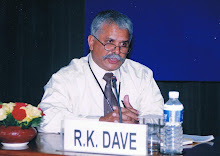From festivals to pilgrimages, public protests to political
rallies – mass gatherings are a way of life in India – and some of them result
in unfortunate, sometimes avoidable, incidents of stampedes. Parsing
through a timeline of such disasters over the past decade paints a sad picture.
A country of over a billion people needs to have better ways of dealing with
crowds. We need to first understand the root causes behind stampedes at
specific venues (places of worships or bus terminal, metro, railway station etc.) and
then attempt to address them.
Mass deaths occur often at pilgrimages in India, when vast, dense crowds put heavy burdens on transportation and safety infrastructure. I am siting example of railway as transportation infrastructure and few incidents which were avoidable.
In August 2013, an express train was unable to stop and plowed into pilgrims crossing a set of train tracks in the state of Bihar, killing more than 30 people.
A similar number were trampled rushing to a train platform in February, marring the 55-day Kumbh Mela festival, whose crowds were estimated at 80 million. As per information gathered - the footbridge where the stampede started was designed to hold less than a thousand (1000) people, but 3,000 people were using it at one point. The station, which was built to hold 25,000 people, had a crowd of almost 200,000 !
1. Identify all railway station for the “holding capacity” at the time of commissioning of such station and growth of human traffic at the "current point of time".
2. Immediately take measures for matching the current holding capacity with the current requirement. Current capacity requirement should be based on the “maximum human presence” at the railway station at any given time / day during a year. Exceptional events which are occurring at larger gaps (5-10-15 years) should also be considered on case to case basis.
3. Special trains should be arranged only with consultation of the state and local authorities responsible for management at the destination. Local authorities are in difficult situation when the inflow of visitors goes beyond their expectations (specifically during the meals). The holding capacity of venue is an important factor for planning of mass gathering events.
4. Split incoming and outgoing passenger traffic (diversity) on with respect to time and space or location to avoid “reverse flow” which is more dangerous then the one-way flow.
5. Advance information (arrivals, departure, delays, change in plate form etc.) to the stakeholders is the key and all efforts should be put in order to ensure that required information reaches the end users in time.
6. Special arrangements should be designed and implemented for embarking / disembarking from / into unreserved coaches.
7. Enough resources should be available to respond to any unforeseen situation and sever incident.
Mass deaths occur often at pilgrimages in India, when vast, dense crowds put heavy burdens on transportation and safety infrastructure. I am siting example of railway as transportation infrastructure and few incidents which were avoidable.
In August 2013, an express train was unable to stop and plowed into pilgrims crossing a set of train tracks in the state of Bihar, killing more than 30 people.
A similar number were trampled rushing to a train platform in February, marring the 55-day Kumbh Mela festival, whose crowds were estimated at 80 million. As per information gathered - the footbridge where the stampede started was designed to hold less than a thousand (1000) people, but 3,000 people were using it at one point. The station, which was built to hold 25,000 people, had a crowd of almost 200,000 !
These
are purely man-made disasters, and as such, they are avoidable. We have handled
natural disaster like cyclone Phailine in Orissa successfully and needless to
say that we should be able to stop the man-made ones too.
Few steps (not limited to) – Railway ministry should look at for ensuring safe passage for pilgrims in India are suggested as given below.1. Identify all railway station for the “holding capacity” at the time of commissioning of such station and growth of human traffic at the "current point of time".
2. Immediately take measures for matching the current holding capacity with the current requirement. Current capacity requirement should be based on the “maximum human presence” at the railway station at any given time / day during a year. Exceptional events which are occurring at larger gaps (5-10-15 years) should also be considered on case to case basis.
3. Special trains should be arranged only with consultation of the state and local authorities responsible for management at the destination. Local authorities are in difficult situation when the inflow of visitors goes beyond their expectations (specifically during the meals). The holding capacity of venue is an important factor for planning of mass gathering events.
4. Split incoming and outgoing passenger traffic (diversity) on with respect to time and space or location to avoid “reverse flow” which is more dangerous then the one-way flow.
5. Advance information (arrivals, departure, delays, change in plate form etc.) to the stakeholders is the key and all efforts should be put in order to ensure that required information reaches the end users in time.
6. Special arrangements should be designed and implemented for embarking / disembarking from / into unreserved coaches.
7. Enough resources should be available to respond to any unforeseen situation and sever incident.



No comments:
Post a Comment